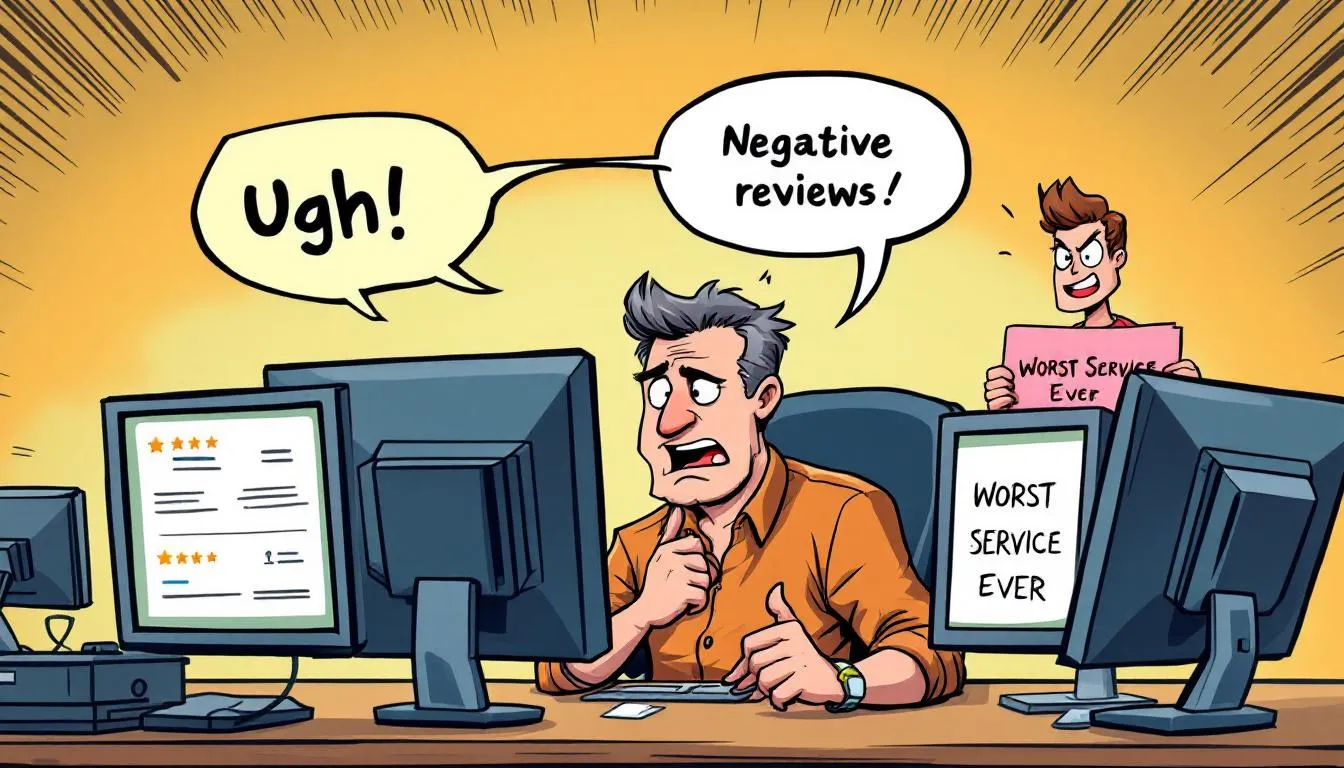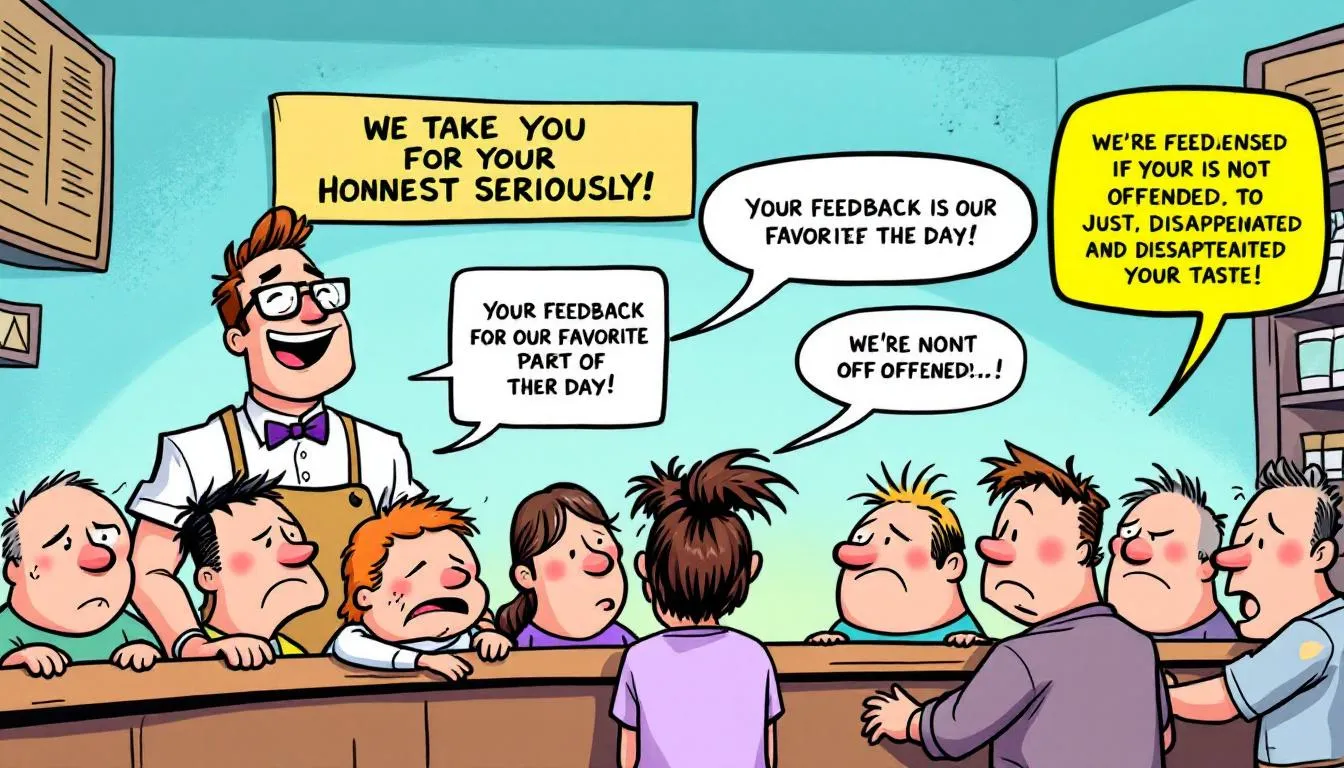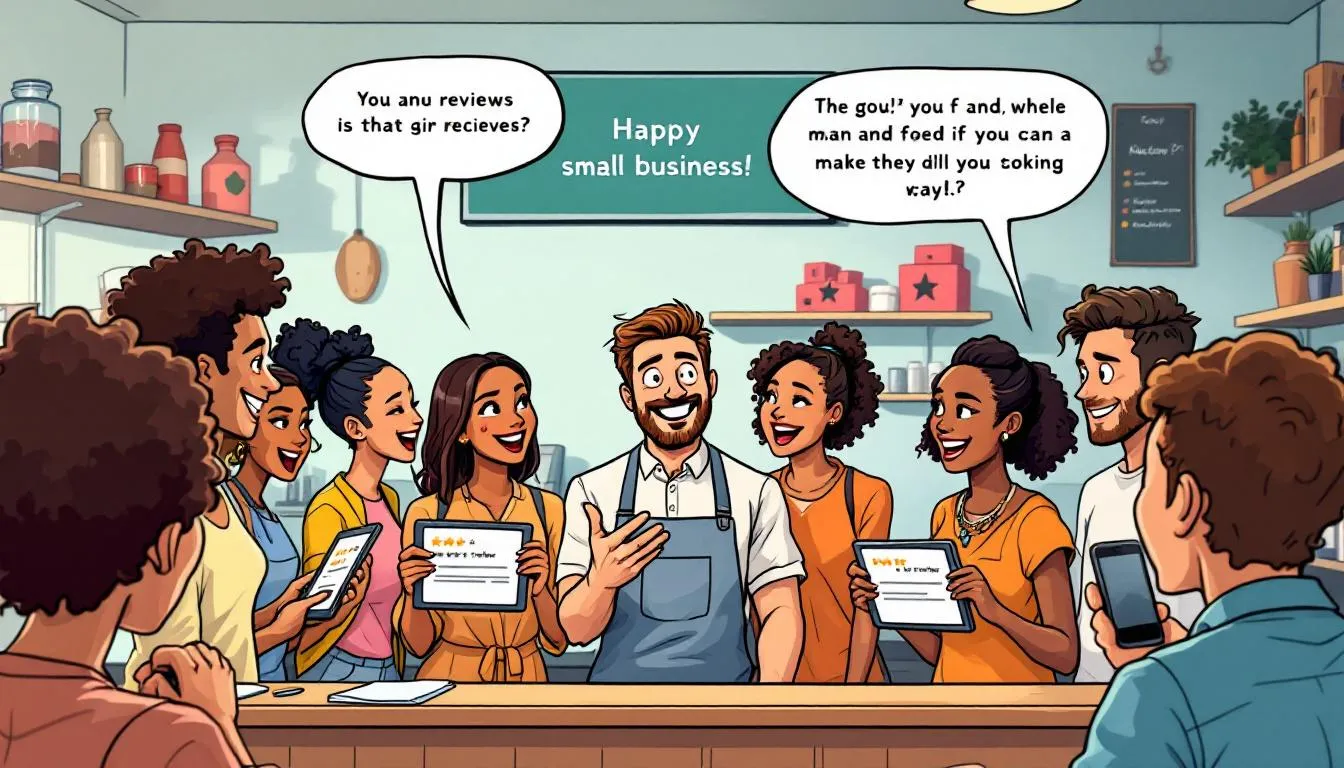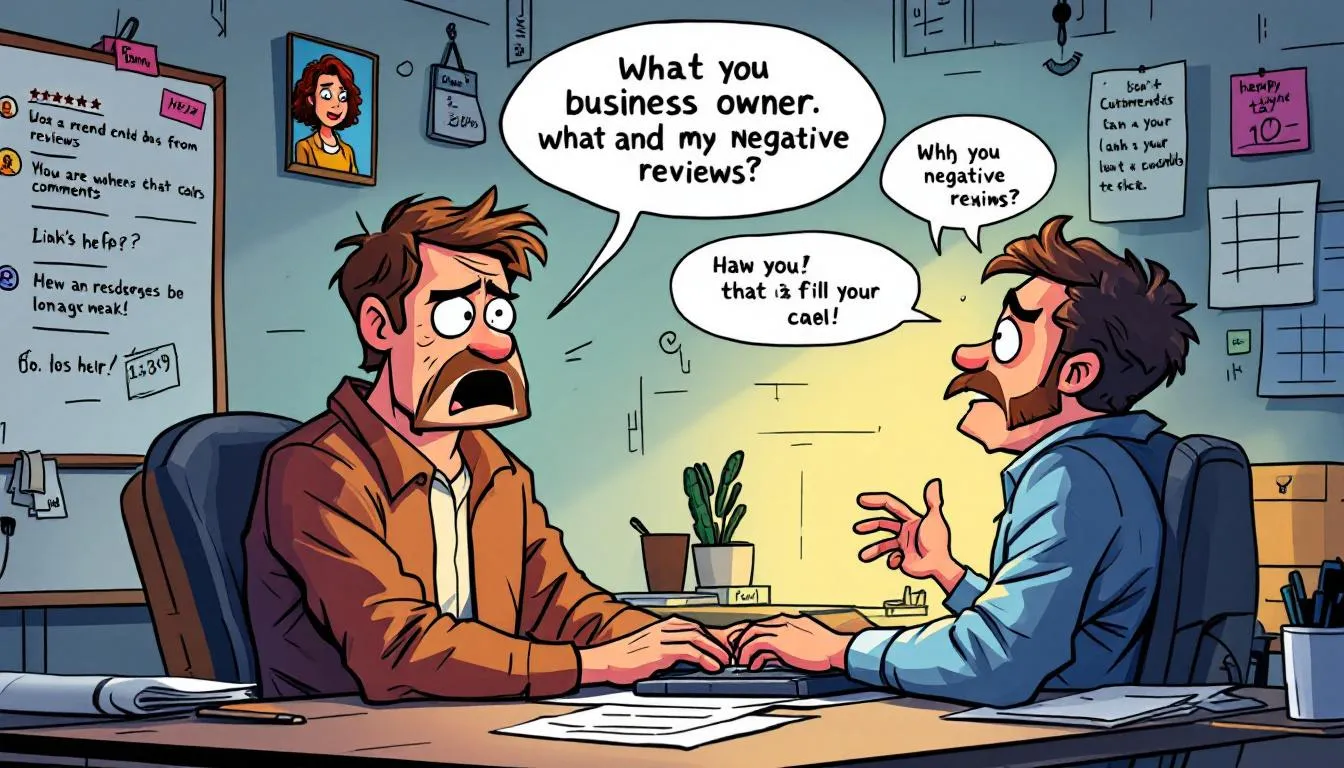.png)
Negative reviews can hurt your business’s reputation, but responding to them effectively can turn a bad situation into an opportunity. This article will guide you on how to reply to negative reviews with best practices and real-world examples. You’ll learn the importance of timely responses, how to craft thoughtful replies, and common mistakes to avoid.

Responding to negative reviews is crucial for maintaining and enhancing your business’s reputation. Addressing negative feedback can significantly boost your reputation and attract more customers. In fact, 89% of consumers are likely to support a company that replies to every online review, showing that customers appreciate businesses that engage with their feedback.
More than half of customers expect a response to negative reviews within one week, underscoring the importance of timely responses in demonstrating a commitment to customer satisfaction. Engaging with negative feedback shows that you value customer input and are dedicated to resolving issues, which can lead to a 16% increase in customer advocacy. Conversely, neglecting to respond can signal a lack of concern and damage your brand’s reputation.
Silence in response to negative reviews can make it appear that your business is hiding something or is indifferent to customer concerns, which can lead to further dissatisfaction and erode trust among dissatisfied customers.
On the contrary, engaging with reviews helps improve your business’s local search rankings on Google. Responding to negative reviews addresses immediate concerns and contributes to long-term reputation management and customer engagement.

Effectively responding to negative reviews requires a thoughtful approach that shows you value customer feedback and are committed to resolving issues. The following best practices will help you craft responses that can turn a negative situation into a positive outcome.
Key practices include:
Each of these elements is crucial for managing your online reputation and maintaining customer engagement.
When faced with a negative review, it’s natural to feel defensive. However, maintaining a calm and professional manner is crucial for addressing the issue effectively.
Before replying, follow these steps:
Acknowledging the customer’s experience shows that you care. Happy customers are more inclined to support your business when they feel heard. Recognize their frustration and express disappointment about the situation to help diffuse tension.
Use the customer’s name in your response to personalize the interaction and foster a connection. Thanking the customer for bringing the issue to your attention shows that you value their opinion and are attentive to concerns.
A sincere apology can go a long way in appeasing an unhappy customer. Apologizing acknowledges the bad experience and helps restore trust. Keep it brief, direct, and to the point with apologies short. Offer sincerest apologies and solutions for improvement.
For instance, you might say, “We are very sorry to hear about your experience and would like to make things right in good faith.” This shows you are taking their concerns seriously and are committed to improving your service.
Offering solutions and taking responsibility are crucial for resolving negative feedback. Find practical suggestions to address the customer’s concerns, such as offering a replacement product or a full refund. Provide clear explanations and evidence where applicable.
Acknowledging mistakes and addressing issues head-on can help rebuild trust. Avoid making excuses and focus on accountability. This approach shows your commitment to resolving the issue and improving customer satisfaction.
Encouraging offline communication can prevent public embarrassment and allow for more effective resolution of issues. Inviting customers to discuss their concerns in a conversation offline about things offline often leads to a more personalized and satisfactory resolution.
Providing direct contact information in your response helps address sensitive details while maintaining customer privacy. This approach resolves the issue and enhances customer satisfaction and loyalty, providing more detail on the matter.

Real-world examples of effective review responses can provide valuable insights and inspiration. These examples demonstrate how businesses in different sectors handle negative feedback and turn it into an opportunity for improvement.
Let’s look at how a restaurant, a retail store, and a service industry business effectively respond to negative reviews.
In the restaurant industry, negative reviews about issues like smell and cleanliness can be particularly damaging. An effective response would acknowledge the problem, apologize sincerely, and explain the steps being taken to address the issue.
This shows the restaurant’s dedication to ensuring a positive dining experience for all patrons.
Retail businesses often face complaints about product quality and availability. An effective response responds to the customer’s frustration, acknowledges the inconvenience, and offers a better service, such as a replacement or refund for a defective product, leading to more sales at fair and competitive pricing.
This approach addresses the immediate issue and emphasizes the business’s commitment to quality control.
In the service industry, complaints about misdiagnosis or ineffective treatment can be particularly sensitive. An effective response would acknowledge the client’s concerns, apologize for the negative experience, and emphasize the company’s commitment to providing excellent customer service.
This approach reassures the customer and highlights the companies’ dedication to improvement.

While responding to negative reviews is crucial, it’s equally important to avoid common pitfalls that can exacerbate the issue. Key mistakes to avoid include ignoring reviews, using defensive language, and providing generic responses.
Let’s explore why these actions can be detrimental and how to avoid making things worse.
Ignoring negative reviews can leave issues unresolved and escalate customer dissatisfaction, leading future customers to think the business is indifferent to resolving issues. Responding promptly is crucial for maintaining a positive reputation and addressing customer concerns.
Neglecting to respond can have lasting negative effects on customer trust and business reputation.
Using defensive language in responses to negative reviews can lead to misunderstanding and further dissatisfaction. Confrontational language can provoke further negative reactions and escalate the conflict. Maintaining a calm and professional tone is essential for managing customer relations effectively.
Avoiding defensive or aggressive language can help prevent conflicts from worsening and maintain a positive public perception.
Canned responses can come off as insincere and may do more harm than good. While templates can help maintain a consistent tone and message, personalizing each response shows that you genuinely care about resolving the issue.
Personalized responses are more effective in addressing specific concerns and fostering a connection with the customer.

Negative reviews can be a goldmine of valuable feedback and constructive feedback opportunities for improvement. Effective responses to bad reviews can turn these negative experiences into a positive impact, leading to positive reviews.
This section will explore how to learn from feedback and build customer loyalty through effective review responses.
Insight gained from negative reviews reveals what went wrong and how to fix it. Analyzing feedback helps can lead to actionable improvements in business practices. Most customers who leave negative feedback prefer businesses to use their input for making changes.
A follow-up after resolving an issue can enhance customer trust and loyalty. Acknowledging the customer’s experience and providing reassurance of high standards is crucial.
Effectively resolving customer complaints can convert unhappy customers into loyal advocates. Engaging with customers about their negative experiences can transform them into loyal supporters. Customer loyalty is critical for business success, as satisfied customers tend to advocate for the brand.
Ongoing communication and responsiveness can strengthen customer relationships and enhance loyalty.
Managing online reviews effectively requires the right tools and resources. Review management software and automated response templates can streamline the process and ensure high-quality responses.
Let’s explore some of these tools and how they can help manage your online reputation.
Review management software helps businesses respond to and manage customer reviews efficiently. Platforms like BirdEye and Podium provide features for soliciting reviews and managing responses across multiple review sites. These tools often include features for analyzing customer sentiment and trends in feedback.
Utilizing review management software streamlines the process of responding to customer reviews, leading to better customer relationships and reputation management.
Using AI-generated response templates saves time while ensuring high-quality, human-like responses. These templates streamline the response process, making it easier to manage customer feedback efficiently.
Maintaining a personalized touch in responses is crucial for customer engagement, and AI templates can help achieve this. Incorporating AI templates into your review response strategy enhances both efficiency and response quality.
Different platforms require unique approaches for responding to negative reviews. Google Reviews, Yelp, and Facebook each have their own best practices.
Understanding these nuances will help you tailor your responses effectively and maintain a positive online reputation.
Google Reviews are essential for collecting positive feedback and addressing customer concerns, contributing to your business reputation. Only those with access to the Google Business listing can respond to reviews, and it’s important that the business profile is verified first.
When responding to a review, acknowledge the customer’s concerns, apologize sincerely if necessary, and offer solutions. This approach helps manage your business’s reputation and engage with customers to improve service.
Responding to Yelp reviews requires owners to:
This approach is crucial for maintaining customer satisfaction and managing your online reputation on Yelp, which is extremely important.
Responding to customer feedback on Facebook showcases a commitment to providing excellent customer service. Reviews on Facebook are automatically active when a business page is created, allowing immediate interaction. Engage directly with the customer, maintain a positive tone, and encourage further communication through private messages if needed.
This approach ensures issues are resolved efficiently and privately.
Negative reviews, often seen as a threat, can be transformative opportunities for businesses. By responding promptly, professionally, and empathetically, you can turn negative experiences into positive outcomes. Best practices include staying calm, acknowledging the customer’s experience, offering sincere apologies, providing solutions, and encouraging offline communication. Avoid common mistakes like ignoring reviews, using defensive language, and providing generic responses. Utilize tools like review management software and automated templates to streamline the process. Tailor your responses to different platforms for maximum effectiveness. Remember, every negative review is a chance to learn, improve, and build stronger customer relationships.
It is important to respond to negative reviews as it demonstrates that you value customer feedback, helps protect your reputation, and can foster greater customer loyalty. Engaging with dissatisfied customers can also turn their experiences into positive opportunities for improvement.
To effectively address negative reviews, it is essential to remain calm and professional, acknowledge the customer's experience, offer a sincere apology, provide solutions, and encourage offline communication to resolve the matter. Implementing these practices can significantly improve customer relationships and enhance your business's reputation.
Turning negative reviews into positive outcomes is achievable by actively learning from the feedback, implementing necessary improvements, and resolving complaints effectively, thereby fostering customer loyalty.
Using review management software such as BirdEye and Podium, along with AI-generated response templates, can effectively streamline the management of online reviews. These tools enhance your ability to engage with customers and improve your online reputation.
To effectively respond to negative reviews across platforms, acknowledge the feedback, offer solutions on Google, thank customers on Yelp for their input, and engage directly on Facebook while encouraging private discussions. This tailored approach fosters a constructive dialogue and demonstrates your commitment to customer satisfaction.
Learn how to enhance your online presence, gather more positive reviews, and prevent negative feedback.




Why waste time managing reviews manually? Let ReviewCrusher AI do the heavy lifting for you!
With our AI-powered tool, you can boost your reputation, attract more customers, and grow your business—effortlessly. We automate the tasks that matter most, so you can focus on what you do best.
🚀 More trust. More sales. Less hassle.
This is your chance to see how ReviewCrusher AI can transform your online presence and deliver real results.
Ready to take your business to the next level?
Click below to sign up now and start crushing your goals today! 💪